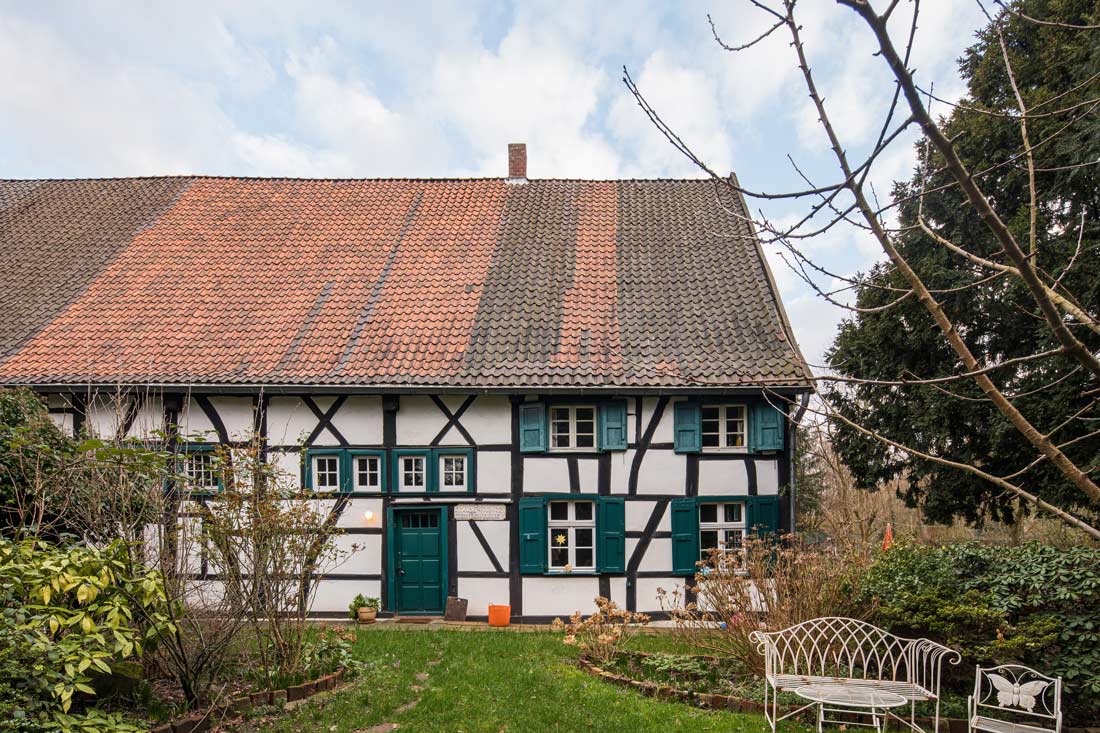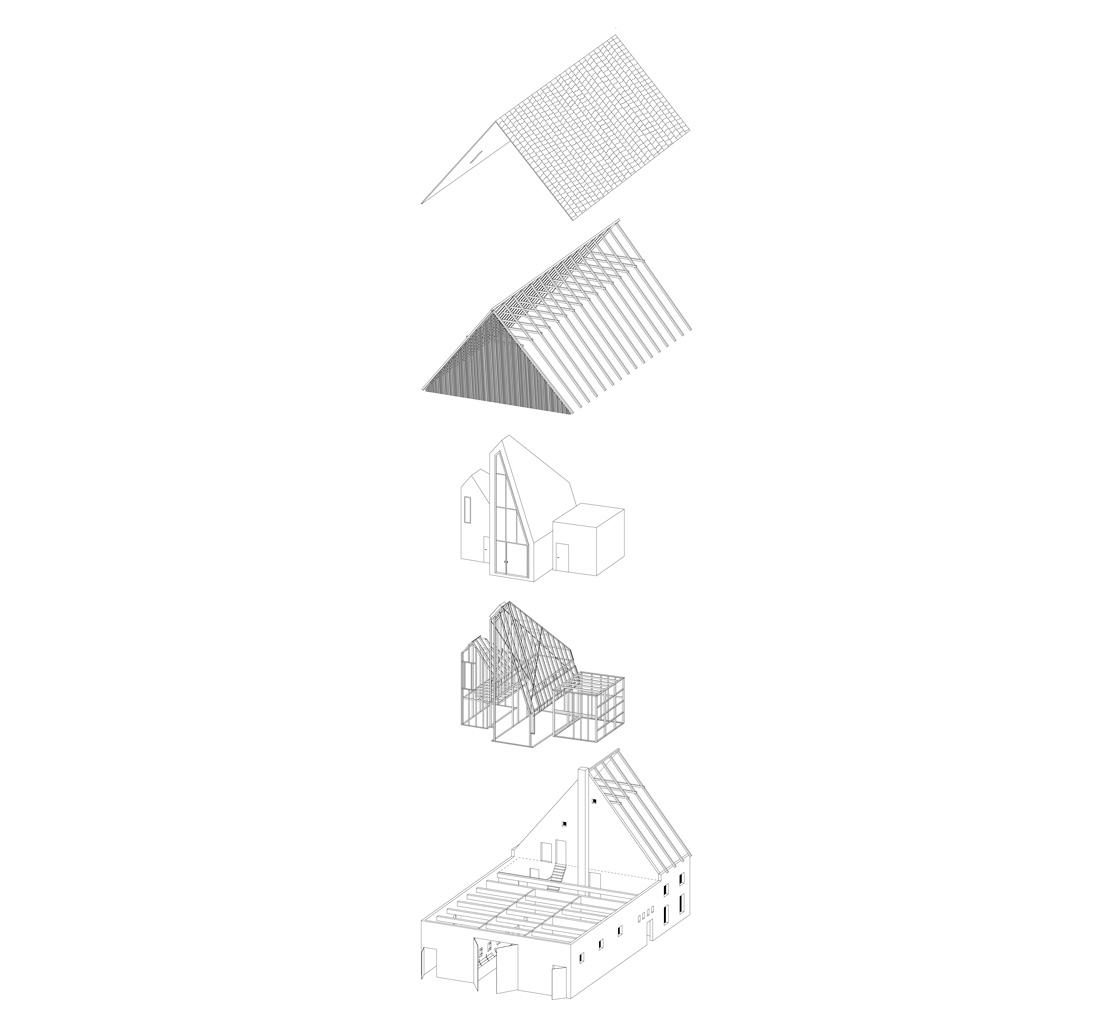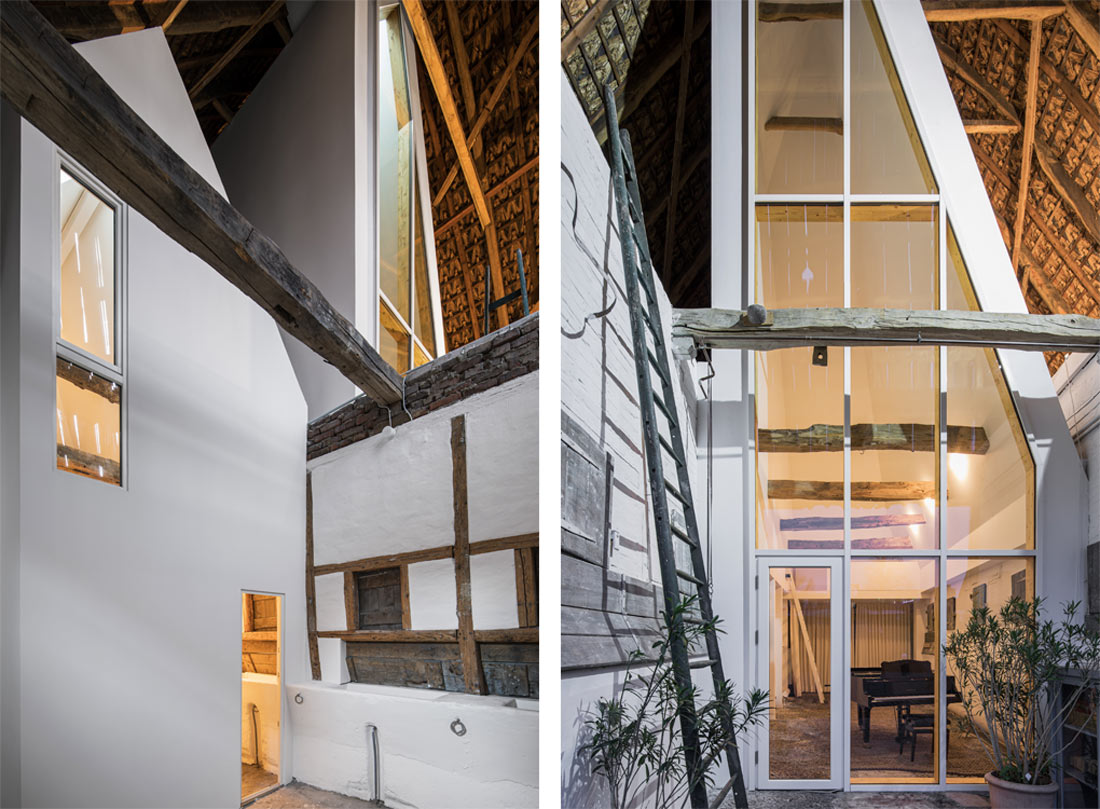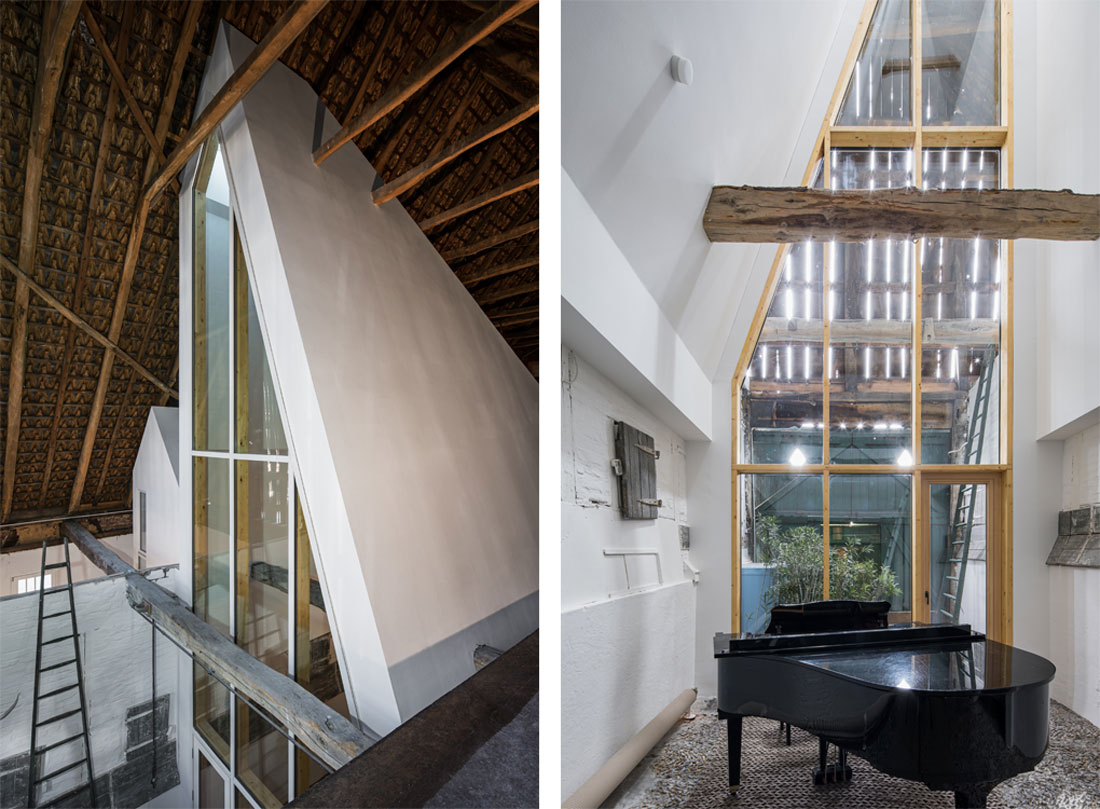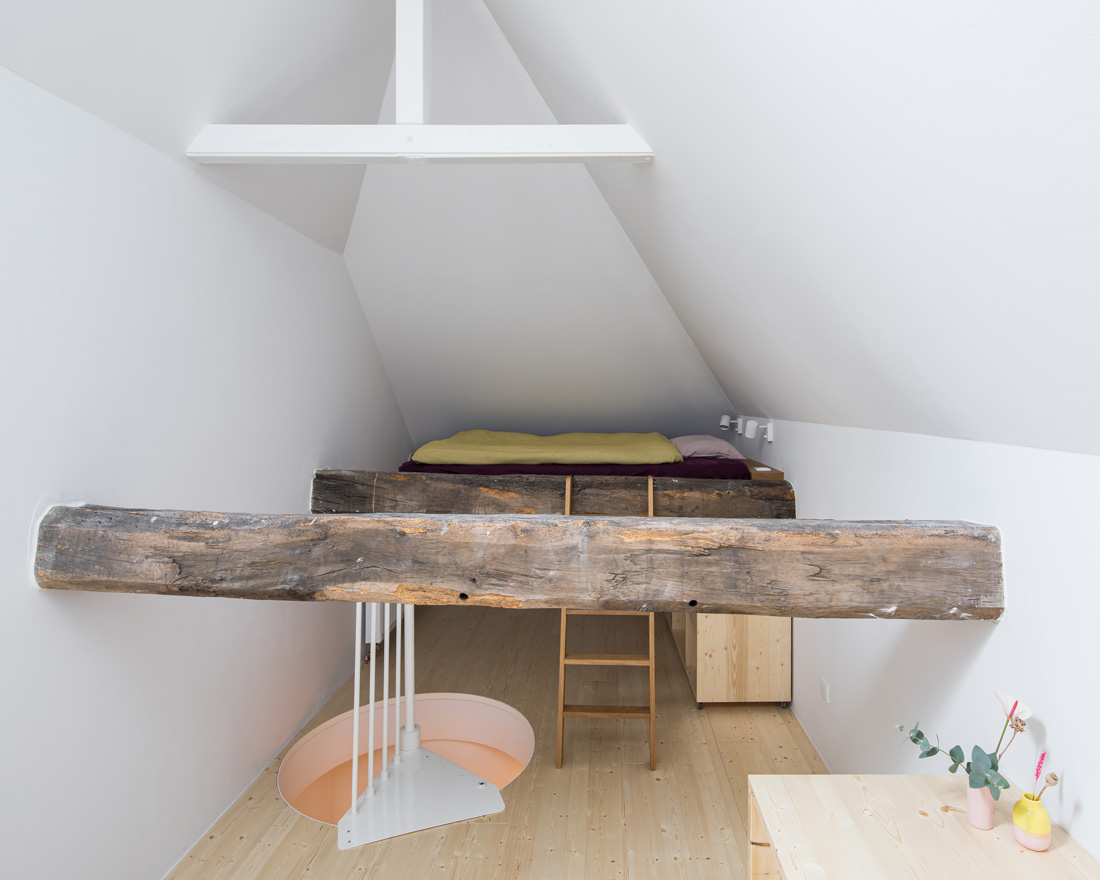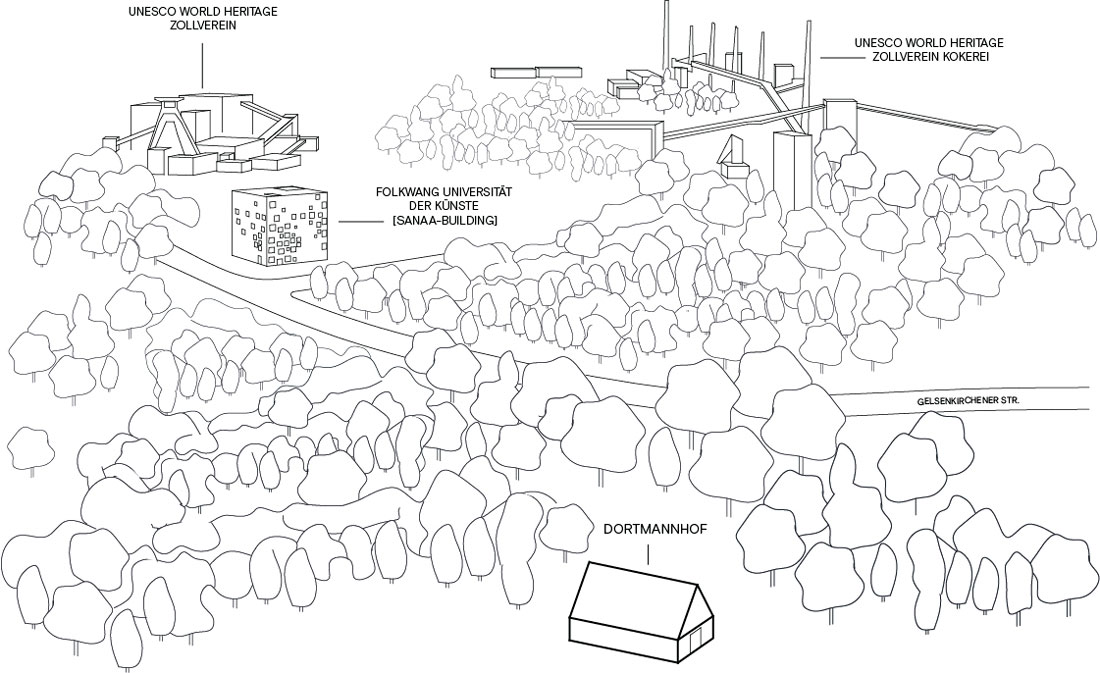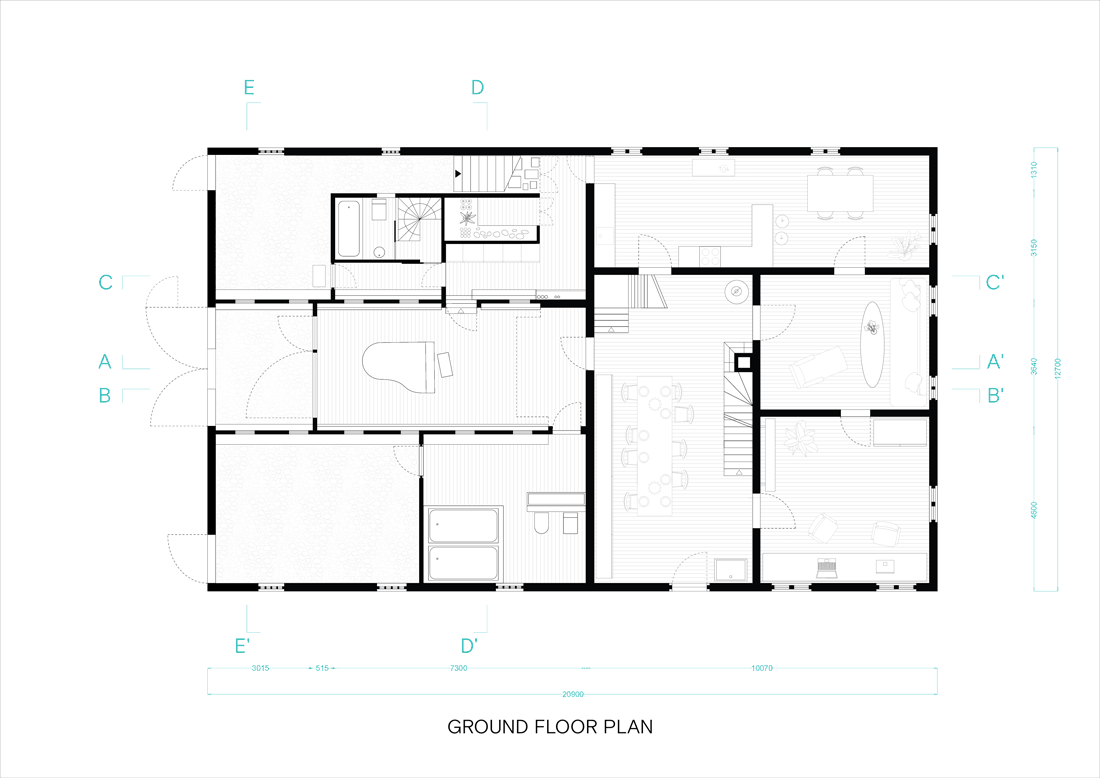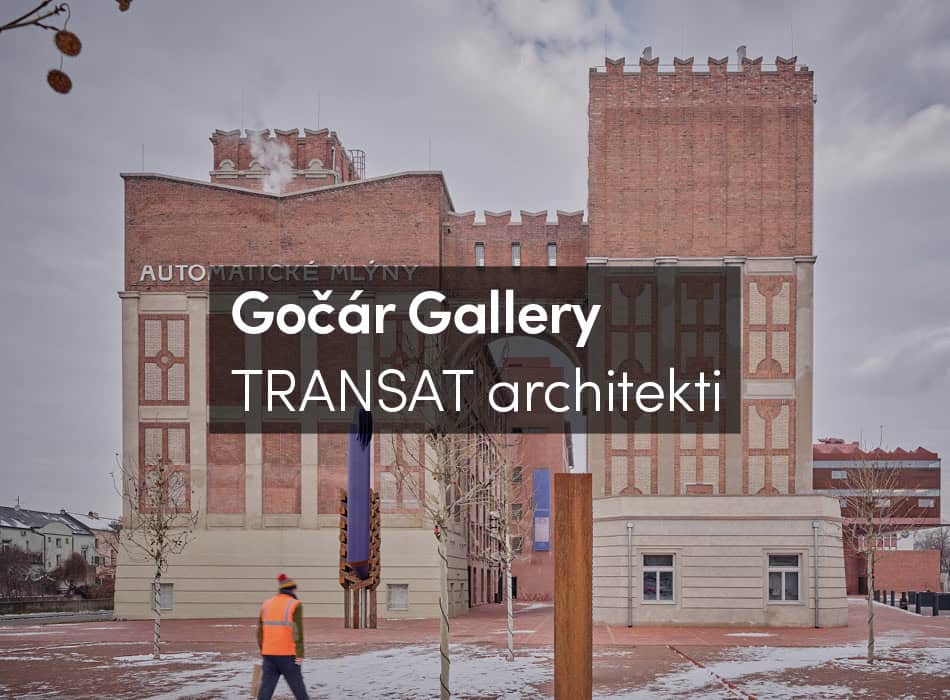The Dortmannhof is a typical 18th-century Hallenhaus, a common construction style from the region around Essen in western Germany. In a Hallenhaus, the family living area and barn were brought together under a single roof in a compact structure which could be up to five stories tall.
The current residents are not farmers, however, but a family of musicians. To serve their needs, an 11-meter-high music studio was added at the center of the three parallel barn spaces. Additionally, a guest house with a separate entrance was constructed in the eastern barn, and a large bathroom was added to the western barn.
The building’s new spaces rise tall and narrow like the surrounding crops. Large north-facing windows allow for additional daylight to stream through the old perforated walls which were originally meant to ventilate the hay. The historic building is comprised of several entrances and internal connections, which allowed for various farming activities to occur simultaneously. These features have been retained, allowing family life, creativity and work to coexist in a similar spirit.
The new internal additions to the house were constructed as oversized inhabitable furniture which can be removed to restore the building’s historical appearance. This approach was taken to meet requirements of German law for monument protection, which allows for historic buildings to be adapted for modern uses.





